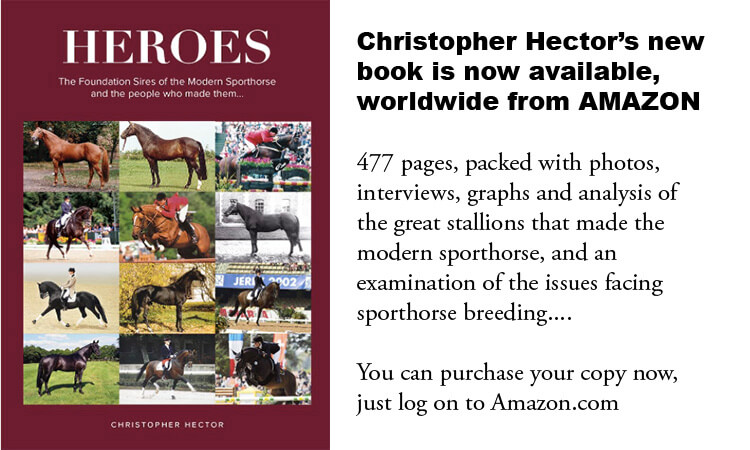By Christopher Hector
Smart mare owners follow the competition results to find a likely sire for their next foal. Well right now there are some likely options that thanks to the magic of frozen semen, and the whims of their owners, are either geldings, or long dead!
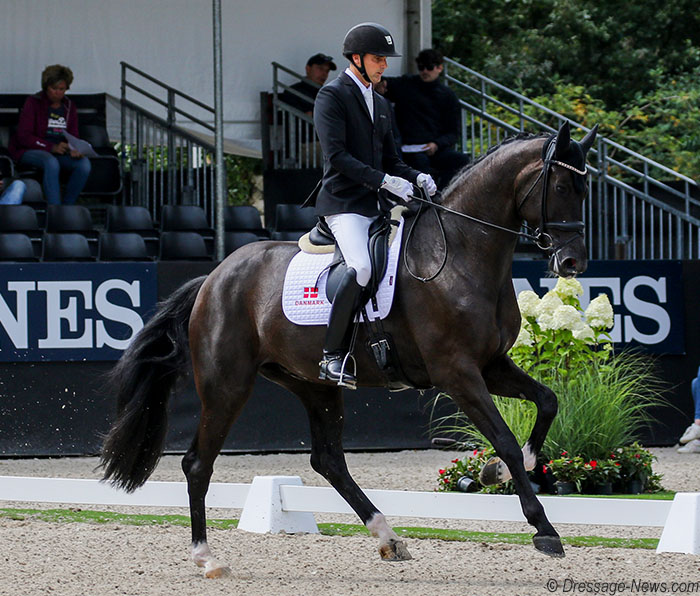
Wendy de Fontaine and with Andreas Helgstrand in the saddle
One emerging star on the dressage scene is the mare, Wendy de Fontaine. Bred by the late Kurt Gosmer, Wendy’s early successes (and they were many) came with Andreas Helgstrand in the saddle. Accusations of horse abuse led to Andreas being banned from competition and he gave the ride to Isabell Werth. The mare started out as Queens Park Wendy but along the way, she morphed into Wendy de Fontaine, thanks to her Danish part-owner, Bolette Wendt who owns the eye-catching French breeding centre, Château de Fontaine.

Isabell and Wendy made their debut at Le Mans in February of this year with wins in the Grand Prix and Special on a pair of 74s. Two seconds at Aachen (not at the famed CHIO), then more triumph at Mannheim, two firsts, 77 in the Grand Prix, 76 in the Special.
The only hiccup in this charmed career came with the announcement in May that the pair would not be competing in the first German selection for Paris at Balve, but they will be there ready to take their place at Aachen CHIO in the five-star, after a change in the decision of the selectors for her to start in the four-star.
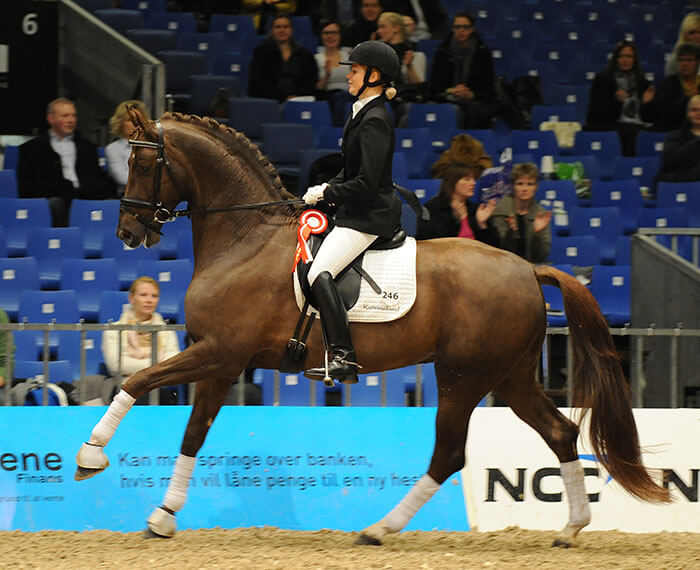
Skovens Rafael placing at Herning in 2009
Wendy is truly the product of the successful modern Danish dressage breeding program. She is out of Skovens Vanilla, bred by Kirsten B Hansen and Jens Lund Pedersen at their Stutteri Skovens, home of their elite stallion, Skovens Rafael. Vanilla is by the Sandro Hit son, Soprano, out of a mare by Solos Landtinus. The Danes, like the Dutch, when they turned their focus from jumping to dressage, used jumping blood, it was all they had, with success. Landtinus was a 1.50m competitor, he is by Landadel out of an Argentinus mare. So far, he has produced one 1.60m jumper, but nine Grand Prix dressage competitors.
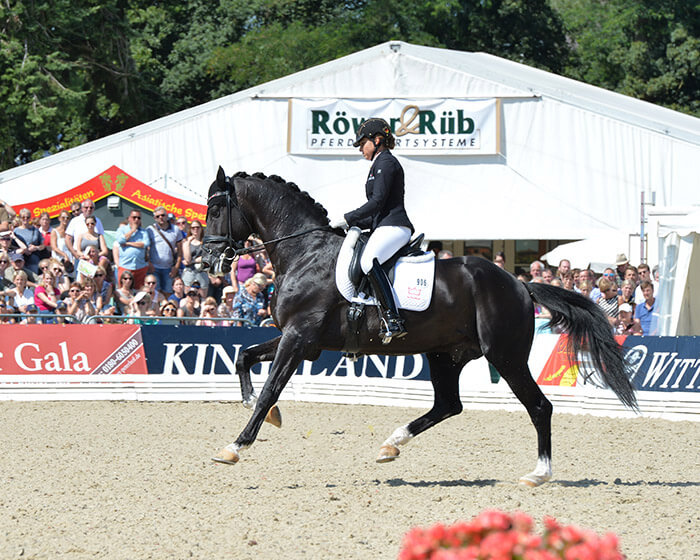
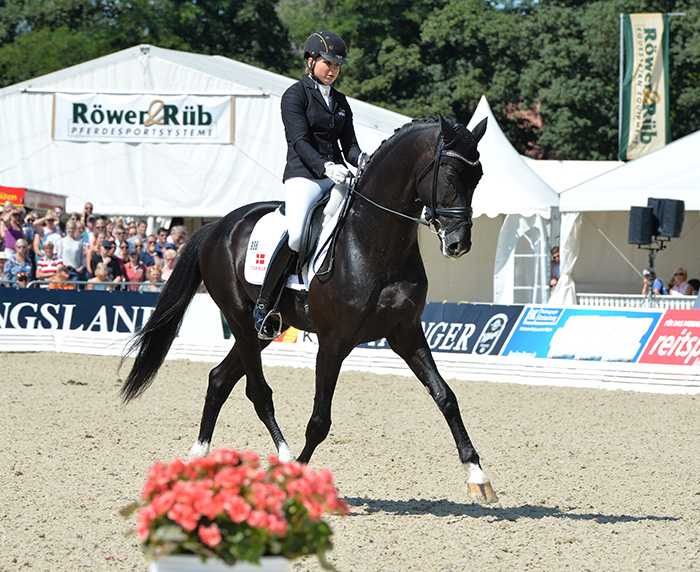
Sezuan with Dorothee Schneider, winning at the Verden World Young Horse Championships
The gelding tag comes with Wendy’s sire, Sezuan, who after a spectacular young horse career, that included three World Championships with Dorothee Schneider, failed to make it as a Grand Prix horse, and in May 2022, he was gelded when he owner Arlette Jasper-Kohl decided she would like to ride him herself.
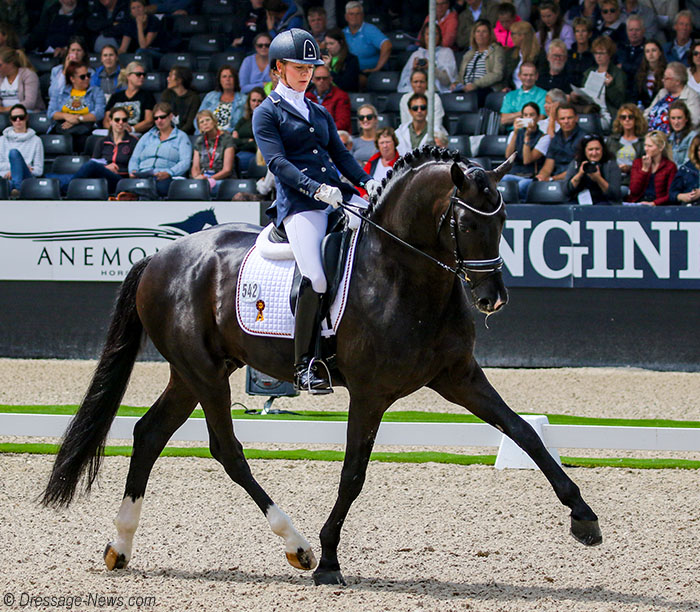
Jessica-Lyn Thomas and Secret
Gelded but not before he had produced 28 licensed stallions in Germany alone, including Secret, So Unique, Blue Hors Santiano, Shu Fu and So Perfect.
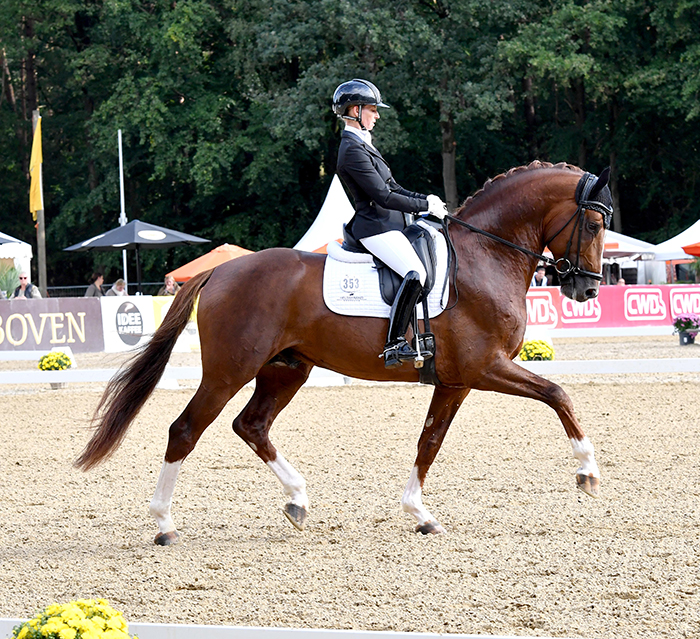
So Unique and Eva Möller – Kiki Beelitz image
His first competition star was So Unique (Donnerhall), a three-year-old Bundeschampion with Eva Möller. Since then, he has produced nine Grand Prix progeny, and thirty-one at Prix St Georges.

Shu Fu, a licensed Hanoverian stallion
Another to suffer the unkindest cut when his owner decided he would be more rideable as a gelding, is Grand Galaxy Win T. The champion colt at the 2014 Danish Licensing, he is royally bred, by Apache (UB40 / Krack C) out of Winner T (Jazz / Zeolit). The then colt had a modest young horse career before he was sold in 2018 to the American based Dane, Charlotte Jorst. Ms Jorst had a few small tour scores in the 60’s but their last appearance, in April 2021 was not a success, entered in the Inter 2 for a DNS and an Elimination.
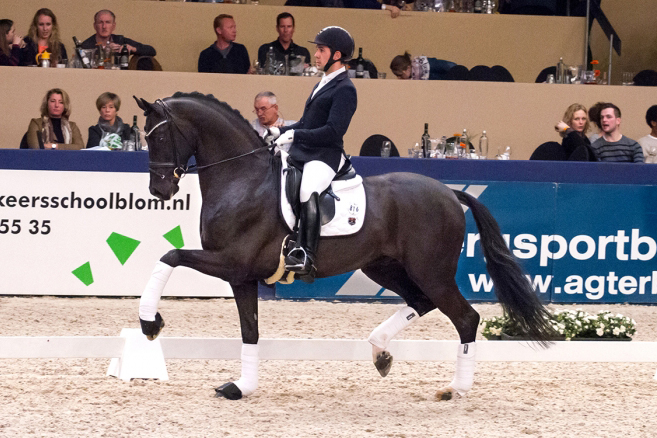
Grand Galaxy Win – Champion Colt at the Danish Licensing
As a sire, Grand Galaxy Win has been more successful, seven at small tour and three Grand Prix. His most successful foal has been Global Player OLD, out of Chatel’s Shurana (Don Schufo / Rawage Quintus) bred by Henrick Hansen. Ridden by Eva Möller, he competed in three World YH Championships in a row, fourth as a five-year-old in 2021, the following year, he won gold. He was then transferred to Helgstrand rider, Leonie Richter, who took him to silver at the 2023 Champs.
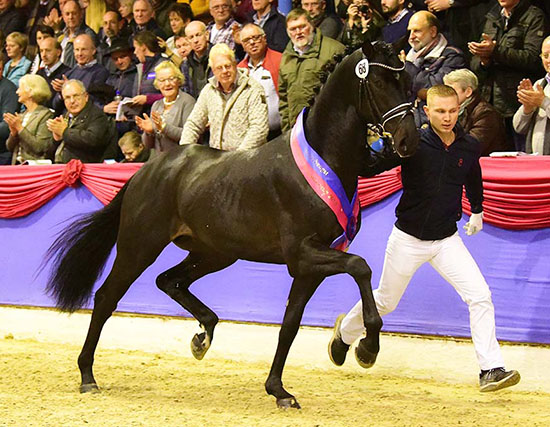
Global Player, a winner from the start
Global Player has now been sold as a junior rider’s horse to German Marie Sohler but he is still listed on Mr Schockemöhle’s stallion roster at a service fee of €1,300, while his two sons, Global Amour and Global (both out of Fürstenball mares) are available at €800 and €1,000).
Gather round the weegee board as we summon some of the long-gone great sires of the Holstein breed. The Holstein Verband is currently auctioning a fascinating selection of straws from their vault: Cor de la Bryère, Carthago, Corrado I Cassini I, Caretino, Quidam de Revel, Baloubet du Rouet, For Pleasure, Quick Star and Big Star. Twenty-five straws in all, most of them with an ICSI permit, including Corde.
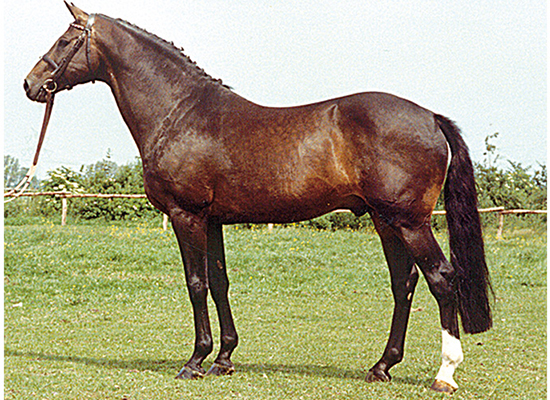
Cor de la Bryère is the most expensive at €10,900
The start-up prices are an interesting insight into how these ‘Golden Oldies’ are ranked within the Verband. Cor de la Bryère is the most expensive at €10,900, followed by Cassini I – €10,450, Carthago – €10,150, Contender – €7,000, Capitol – €6,500 and For Pleasure – €6,200.
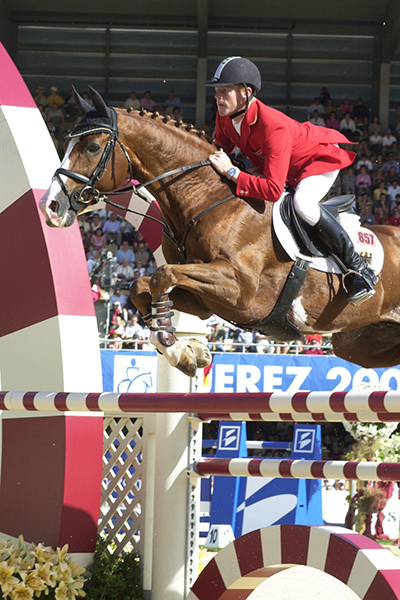
For Pleasure, his price tag is €6,200
The response was fairly modest, with most of the straws going for their start-up, though some of the second straws were cheaper, Carthago for €8,150 and Contender for €4,800. There were bargains, Baloubet de Rouet at €2,750, Corrado, €1,500 and Quidam de Revel for €1,300.
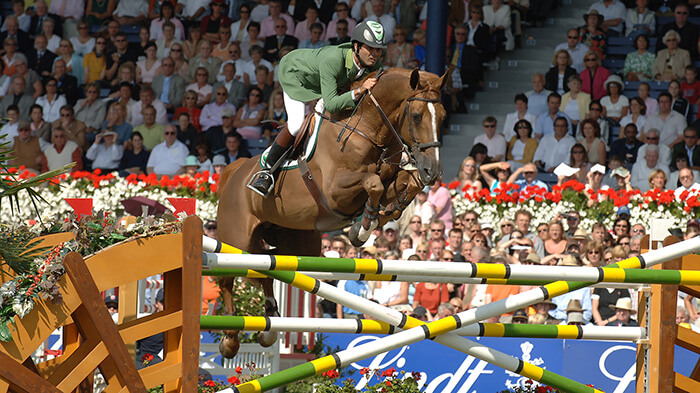
Baloubet de Rouet and Rodrigo Pessoa at Aachen in 2005
Bargains, or are they? Does buying the past, fly in the face of what breeding is all about? To examine that we must turn to the great German philosopher Hegel and his dialectic: thesis, antithesis, synthesis.
Take Corde as our thesis (a horse with great cleverness and jumping style but lacking scope) add our antithesis (the great mares of the Holstein marshes, with their abundance of power) merge the two together for a synthesis that revolutionised jumping breeding. Having done that do we need to go back to the original thesis? The canny breeders replicated that dialectic through clever crosses, using Capitol and his sons, to add scope whenever the products started to lose it. Master Dutch breeder, Jan Greve characterised the lines as the ‘clever C’ and the ‘dumb power C’.
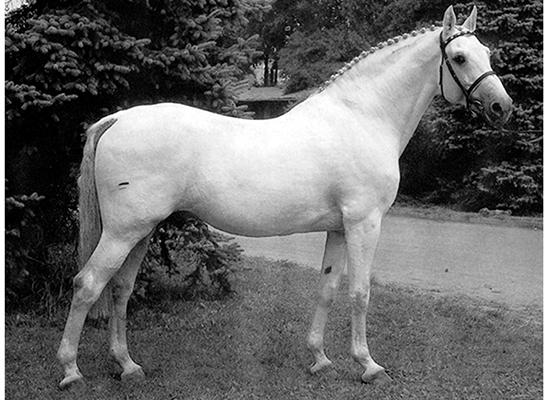
Capitol, added scope whenever the products started to lose it..
Looking at the top ten at the 2023 World Cup in Omaha, we see Corde’s influence clearly, but equally clearly, filtered, and improved by the dialectic of smart breeding.
The reserve champion was MonacoNOB is by Cassini II, who is by Capitol, and out of a mare by the Cor de la Bryère son Caletto II. Monaco’s dam, Ulla II is by the Cor de la Bryère grandson, Contender. Third placed Pepita con Spita, is out of Pamina by the Corde great grandson, Come On. Fifth went to Darc de Lux, by Darco but out of Ordelia by Contender, who was out of Ordela who is by Cor de la Bryère himself.
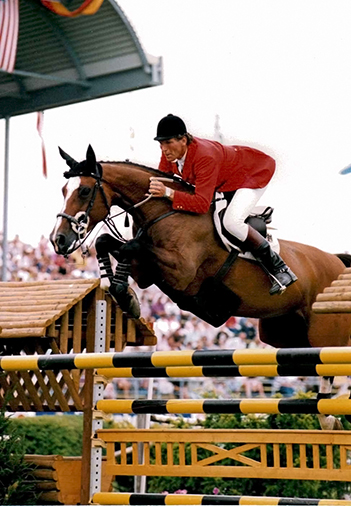
Classic Touch and Ludger Beerbaum
Eighth place, United Touch S, carries two crosses of one of the great competitors, Classic Touch, a superstar with Ludger Beerbaum. She was a daughter of Caletto II. United Touch S is by Untouched, by Untouchable by Hors La Loi III. Untouched is out of Cantate Touch by Capitol, out of Classic Touch. United Touch S is out of Touch of Class by Lux Z who is by Lord Calando out of Perra by the Corde son, Calando I. Lux Z is out of Apocalypte Z who is out of Sanntona by Caletto I. Touch of Class is out of Cantate Touch who we met on the other side of this pedigree. Now did that make your head spin?
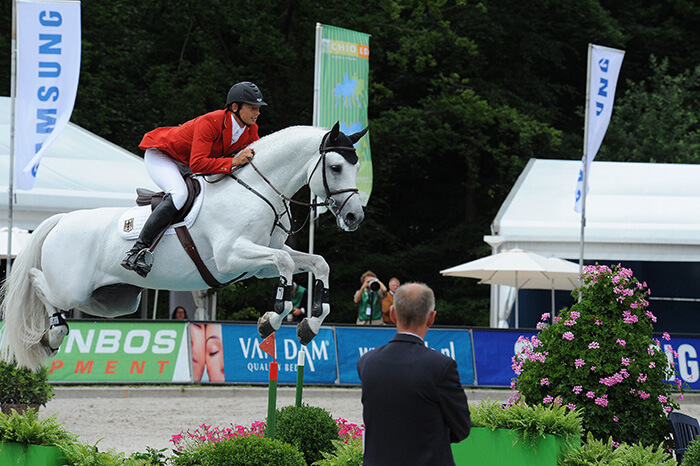
Cornet Obolensky, competing at Rotterdam Show
Balou du Reventon finished ninth. He is by Cornet Obolensky, a great grandson of Cor de l Bryère, and out of Georgia, by Continue by Contender. Rounding out the top ten was Leone Jei by Baltic VDL out of a mare by the Corde son, Corland.
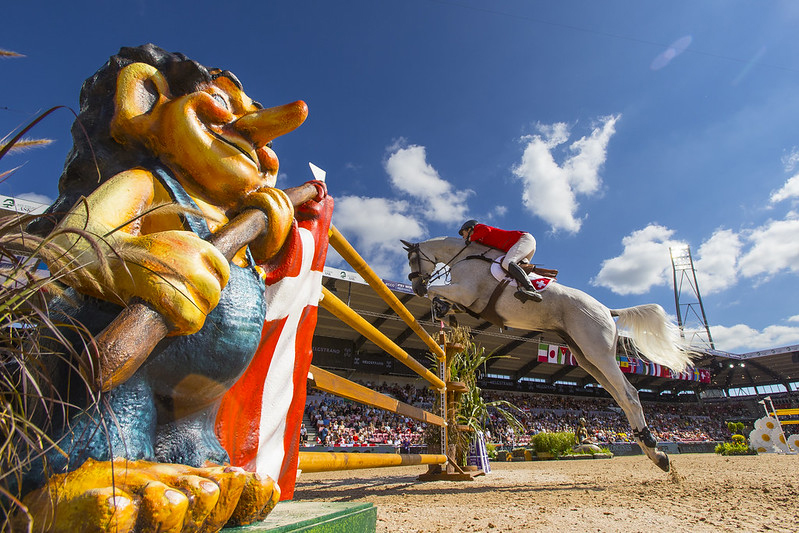
Leone Jei competing at the 23 Omaha World Cup
In other words, Corde’s blood is alive and kicking, do we really need to go back to the original?
